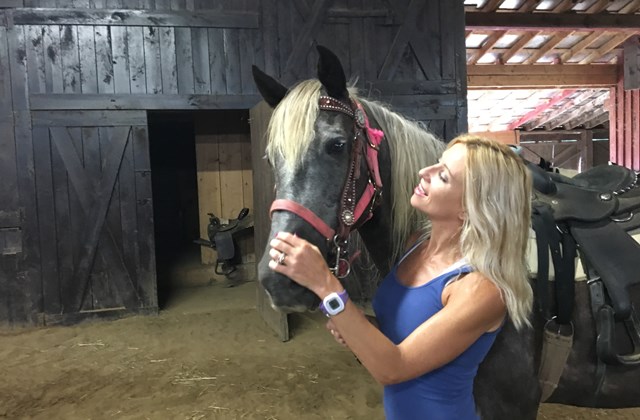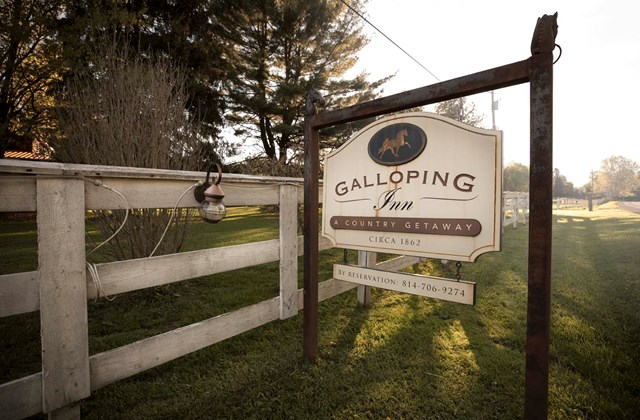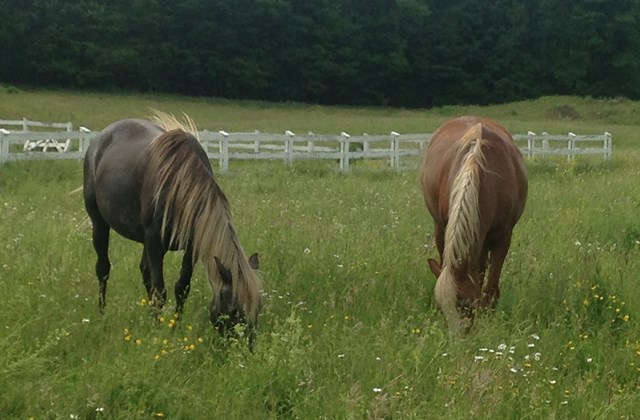How It All Began
Long before U.S. Route 6 became a main road, it was a trail used by the Erie Indians. According to Corry Historical Society president Jim Nelson, the migratory tribe used it to travel from Lake Erie to the Allegheny River in between the summer and winter months. For centuries, the area – said to have been settled by mid-18th century French explorers – has remained a lush, breathtaking landscape.
In 1753, the French established Fort LeBeouf in nearby Waterford, Virginia. As governor, George Washington forded the Allegheny River to try and convince the French settlers to vacate the land, which had already been claimed by the British. In 1760, after the French settlers refused to leave, the British destroyed the French fort, and built a new one on the same site. However, three years later, that fort was burned down during the Pontiac Rebellion, thanks to the strong relationship between the French and Native Americans.
While addressing the French conflict in Waterford, George Washington also met with the Seneca chief, Chief Cornplanter, whose primary grounds were established along the Allegheny River. For his support of the British, Chief Cornplanter was handsomely rewarded with land, appropriately named “Cornplanter's Grant.” Nestled between the river and the mountains, the land offered the Seneca people an opportunity to continue to plant, hunt, and live in their traditional ways. And, because the land was a gift, Cornplanter's Grant was not technically a reservation.
A Growing Landscape
By 1798, 400 Seneca – about one quarter of the total population – lived on Cornplanter’s Grant at the town of Burnt House (traditionally, “Jenuchadego”). Washington believed the Senecas would benefit from a Euro-American education, and invited the Quakers to teach Cornplanter’s people, which included the Chief’s half-brother, Handsome Lake, his uncle Guyasuta, his nephew "Governor" Blacksnake, and Blacksnake's sister, the leading woman of the community and mother of the Wolf Clan.
Compensatory land was provided to those who fought for the American Revolution. Much of this land – including our property – was subsequently bought up by large companies. Early records indicate that this land was first settled in the early 1800s by Eli and Polly Wyman. In the 1840s, the property was sold again – to Jared Boardman, who built the farmhouse that still stands today. In addition, during the early 1800s, at the time of Freehold Township's establishment, two legendary pages in the course of American History were written on our doorstep. Johnny Appleseed, the famous farmer and folk hero, spent significant time in nearby Pittsfield, and is likely responsible for the abundance of apple trees on our property. The Underground Railroad, established by Revolutionary War veterans, also spanned our property, as escaped slaves found refuge in the homes of local abolitionists. In fact, within seven miles of our farm, Underground Railroad tunnels can still be found.
A Modern Marvel
The U.S. Route 6 that exists today grew from the discovery of oil in 1859. With the construction of a major refinery on the Allegheny River, the trail (which would officially become U.S. 6 in 1926) became a major connecting artery between railroads and Lake Erie, while many towns grew and thrived along the route.
Upon his return from fighting in the Civil War, Jared Boardman sought to capitalize on the emerging traffic along the Route 6 trail by opening a tannery business on the property. And nearly 30 years later, he sold the property to John and Mary Johnson. The property changed hands three more times between 1939 and 2000, when a newly married couple, Joe and Jennifer Kubic bought the chalet.
About the Owners
Joe and Jennifer Kubic first fell in the love with the farm house and surrounding property back in 1999 when they were dating and spent countless weekends exploring the area and developing a love for horses. They spent the next few years cleaning up the trails and expanding the pond. Today the Kubic family enjoys the farm and shares it with guests, and friends. They love riding the trails together, swimming in the pond, star gazing and bonfires. Jennifer says there's nothing more satisfying than sharing the magic that is the Galloping Inn with other families and watching others build memories. More about Jennifer's love of being an innkeeper here.



Frequently Asked Questions
We have put together "Welcome Package & Instructions" that you might find helpful to have prior to your visit. It is in a downloadable PDF format.
Q: Will anyone else be there during our rental?
We will not rent any other of the rooms that you are not using to guests outside of your party while you are at the Inn. It is yours exclusively. There is staff that works with the horses daily, and depending on when, there may be landscapers working, but no one else will be inside the Inn but you and your party.
There are two other private vacation homes on the 100 acres. They may used by their owners during your stay, but they are almost a mile away from the farmhouse.
Q: Do you furnish pots and pans?
Yes.
Q: Can we bring our pet?
We only allow dogs and only if they are well behaved. We do not allow cats.
Q: Do you provide someone to cook?
No. Preparing meals is your responsibility.
Q: What is the maximum capacity?
If you rent the base package farmhouse and add on both of the other available rooms, there are 8 beds/sleeper sofas. However, some guests also bring inflatable mattresses and sleep on the couches (there are 4). We have had groups with as many as 20 people. That would be the max, and it would be a bit tight. The most comfortable maximum size is 14.
Q: Is there swimming nearby?
There is a small lake on the property with a pavilion and beach. You are welcome to use this. However, this is a shared resource with the two other private vacation homes.
There is also a very nice public pool about 15 minutes away in the town of Youngsville. It's a slice of the local life with a scenic mountain view.
Q: Are there any added costs?
The rental fee is all inclusive with the exception of fire wood. We allot a reasonable amount for each guest. But if you would like to use more, we ask for reimbursement.
Q: What is the kitchen like?
The kitchen is one of the best parts of the place. It was designed for those who like to cook - good light and ample counter space. There is also a very large granite table in the kitchen that seats ten.
Q: Is there camping?
Yes, you can camp in a number of locations on the property. We just need to know about it first.
Q: Where can I fish on the Inn's property?
You can fish the small lake on the Inn's property. It is open to guests only. The lake is primarily reserved for swimming, therefore we highly regulate it. Do not fish when others are swimming. It is catch and release. Only single, barbless hooks are permitted. Also, it is extremely important to note that there is a liner in the lake. Therefore, do not fish with weights or heavy lures. Bottom fishing can result in a tear to the liner. If the liner tears, the water will drain, which will result in a significant expense to that fisherman.
Q: Are there restaurants nearby?
There are a handful of good eateries nearby. They offer the full range of breakfast, lunch and dinner, fine dining to burgers and beers. See the Welcome Package & Instructions for a list with addresses and phone numbers.
Terms
- We're flexible. Normal check-in is 4:00 PM and Check-out is 1:00 PM.
- No smoking inside any building on the property.
- Keep the grounds litter free.
- Fishing at the Inn is for guests only.
- Do not fish when others are swimming.
- Fishing is catch and release only.
- Only single, barbless hooks are permitted. Weights or heavy lures are not permitted. Bottom fishing can result in a tear to the lake's liner. Tearing the liner will drain the lake and will result in a significant expense to that fisherman.
- While swimming, no diving off the docks. Swim at your own risk.
- No hunting or recreational shooting on the property.
- Cancellation Policy; A $200.00 deposit is refundable up until one month before your arrival date. The full balance is due for any cancellation, if the cancellation is received within two weeks prior to your arrival date.
Note: Terms are subject to change. A complete list of rules is contained in the Welcome Package & Instructions.

